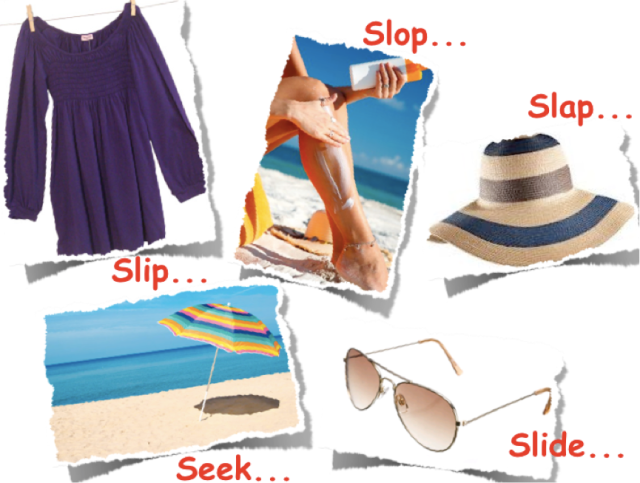While you may already know why daily sunscreen use is good for you, your next question would most probably be… Which type of sunscreen would be best for me?
With the gamut of sunscreens available out there, choosing can be confusing! Let us help you make an informed decision – first, by identifying the types of UV rays and their effects on the skin, second, reviewing the latest photoprotection recommendations, and finally, understanding what those labels or claims on the sunscreen packaging actually mean.
The UV Spectrum
UVB, also known as “sunburn spectrum”, is what causes sunburns, eye problems, and DNA damage. Remember, B for burn. The sun protection factor (SPF) is based on testing against this waveband.
UVA, also known as “long wave UV” or “black light”, may not cause sunburns as much as UVB, but note that 95% of the radiation that reaches the earth is UVA. UVA is the form of light we receive on a cloudy day and or when we are behind a window glass. Compared to UVB, UVA goes deeper into the skin, hitting the elastin and collagen fibers, hence playing a more significant role in photoaging (dark patches, wrinkles, loose skin, tumors). Remember, A for aging.
Visible light is the wavelength that can be perceived by our eyes (e.g. light from a bulb or the television), while infrared is felt is heat (e.g. such as when you stand near a stove). These wavelengths, although not usually harmful, become relevant for people affected with photodermatoses (skin conditions triggered by light exposure) or pigmentary disorders (most common would be melasma).
Photoprotection: Slip, Slop, Slap, Seek, Slide…

Sunscreen application is just one form of photoprotection. Sun Smart Australia came up with this easy-to-remember guide:
Slip on some clothes. Clothing as a sun protector is a function of the hole size of the fabric mesh. A practical tip would be to hold your shirt against the light. If you can see an image through it it probably has an SPF less than 15. If light goes through but you can no longer see the image, it’s SPF 15 to 50. If light does not go through, it’s above 50. The best material is denim.
Slop on some sunblock. Apply a broad spectrum sunscreen of at least SPF 30 20 minutes before exposure and reapply every 2 hours or after swimming or sweating. Don’t forget your ears and lips!
Slap on a hat. A study showed that hats may decrease the risk of skin cancers and another study showed that a hat with a 3 inch brim that goes all the way around confers the most protection.
Seek shade, especially from 10am to 4pm. The shorter your shadow, the more you should be staying the shade. Remember too that water, snow, and sand reflect the sun’s rays so be extra cautious.
Slide in some sunglasses. Choose close fitting wrap around style sunglasses and look for the label 99.5% to 100% UV protection or a 9 or 10 EPF rating.
Sunscreen says…
UVA/UVB/VIS/IR
Sunscreens use a combination of UV filters to protect you against specific wavelengths. It is important to use one that protects you at least from both UVB and UVA, otherwise indicated as “broad spectrum”. Some sunscreens contain additional filters for visible and infrared wavelengths and some also contain additional antioxidants for photoimmunoprotection. “Oral sunscreens” provide that additional boost by photoimmunoprotection but should only be used in conjunction with – never as a replacement! – topical sunscreens.
SPF
SPF or sun protection factor indicates how much the sunscreen protects you from a burn. Let’s say your skin reddens after a 10 minute sun exposure. Correct application of an SPF 30 sunscreen will allow you to stay 30 times longer (300 minutes) before your skin reddens. SPF 30 is the current recommendation as it protects 97% of the sun’s UVB rays. Going higher than SPF 50 has very minimal additional benefit.
WATER-RESISTANT
While there is no such thing as a waterproof sunscreen, some sunscreens remain effective after 40 minutes (water-resistant) or 80 minutes (very water-resistant) under the water. So it is very important to reapply after swimming or sweating.
ACTIVE INGREDIENTS
Chemical/Organic Filters
These work by absorbing the UV rays and breaking them down to reduce skin penetration. The most common of these filters are avobenzone and benzophenone. While cosmetically pleasing, these filters sometimes feel warm after sun exposure and elicits a photoallergy in some individuals.
Physical/Inorganic/Mineral Filters
Titanium dioxide and zinc oxide sit on top of your skin and deflect UV rays from penetrating. These particles leave a bit of a white tinge on your skin, but newer sunscreens use them in a micronized form to make them more cosmetically pleasing. Iron oxide is also gaining popularity as it blocks visible light.
Most sunscreens today now use a combination of both chemical and physical filters.
CREAM vs OIL-FREE GEL
Creams work best for normal to dry skin, while gels are better for those with oily or acne-prone skin. If you wish to apply make up, apply your sunscreen 20 minutes prior.

THE PAO SYMBOL
You will see a lot of cosmetics with the Period-After-Opening symbol at the back. This indicates the useful lifetime of a product after it has been opened for the first time.

Other reminders…Also remember to apply the right amount of sunscreen or its SPF dramatically decreases. How much is enough? 1 shot glass or the size of a golf ball for the whole body or 2.5 fingertip units for the face and neck.


